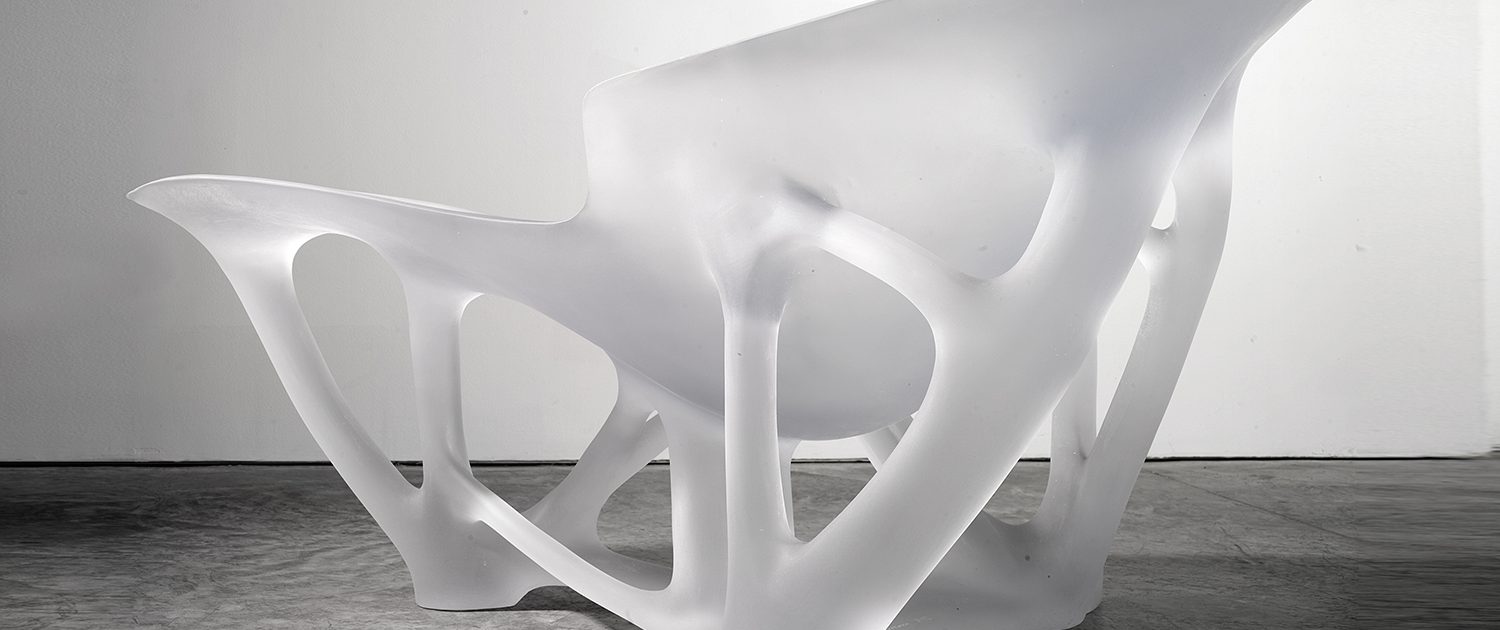Bone Chaise (2006)
After seeing the first Bone Chair results, I knew right away that we’d only taken our first steps into an entire world of possibilities just waiting to be discovered. I for one though it would be exciting to develop more design in this manner. That’s why for the first time, I began working on a series: the Bone Furniture series. The second design in the series was the Bone Chaise. This, too, was to be created from a single material and I thought it would be interesting to find out if that could be a soft material, because of the lazy function of a chaise longue. What was also interesting about this type of design was that it wasn’t symmetrical, so that the results of the algorithm became even more unpredictable. One of the interesting characteristics of designing this way is that it is an interaction between man and computer. I never could have come up with this design myself; mine would probably have looked much more artificial. On the other hand, an algorithm does need the input of a designer to come up with a sensible design, in this case one that is also comfortable to sit in.
Our building in the Rotterdam dock area also housed, for instance, the workshop of Vincent de Rijk; well-known for the many models he has made for the world’s more renowned architects. We conducted lots of experiments with resin there. Casting resins have been of major importance to the evolution of design. I have for instance always found Gaetano Pesce’s experimental work with polyurethane interesting, as well as Eames’s more industrial work. But one of the disadvantages of many casting resins is that they age quickly under the influence of UV radiation. However, we stumbled upon newly developed casting resins that were UV resistant. This proved to be the perfect material for this design. The ice-like transparency of the material would also ensure the visibility of the structure from above.
To produce the Bone Chaise, we first made a wooden model we could take a mold from. We were able to cut the model from countless layers of wood that fit precisely together and together formed the chaise. A process similar to that of the paper Bone Chair, but more coarse and on a larger scale. The Bone Chaise is the only item in the series that we hand-made a mold for. A huge job, which through a lot of trial and error eventually resulted in the prototype now on show in the Centre Pompidou in Paris.
The Bone Chaise is part of the permanent collection of the Groninger Museum, NL, Centre Pompidou, Paris, Victoria & Albert Museum, London, UK and the LACMA, Los Angeles, USA
(photocredit: JL & Daniel Nicolas)














